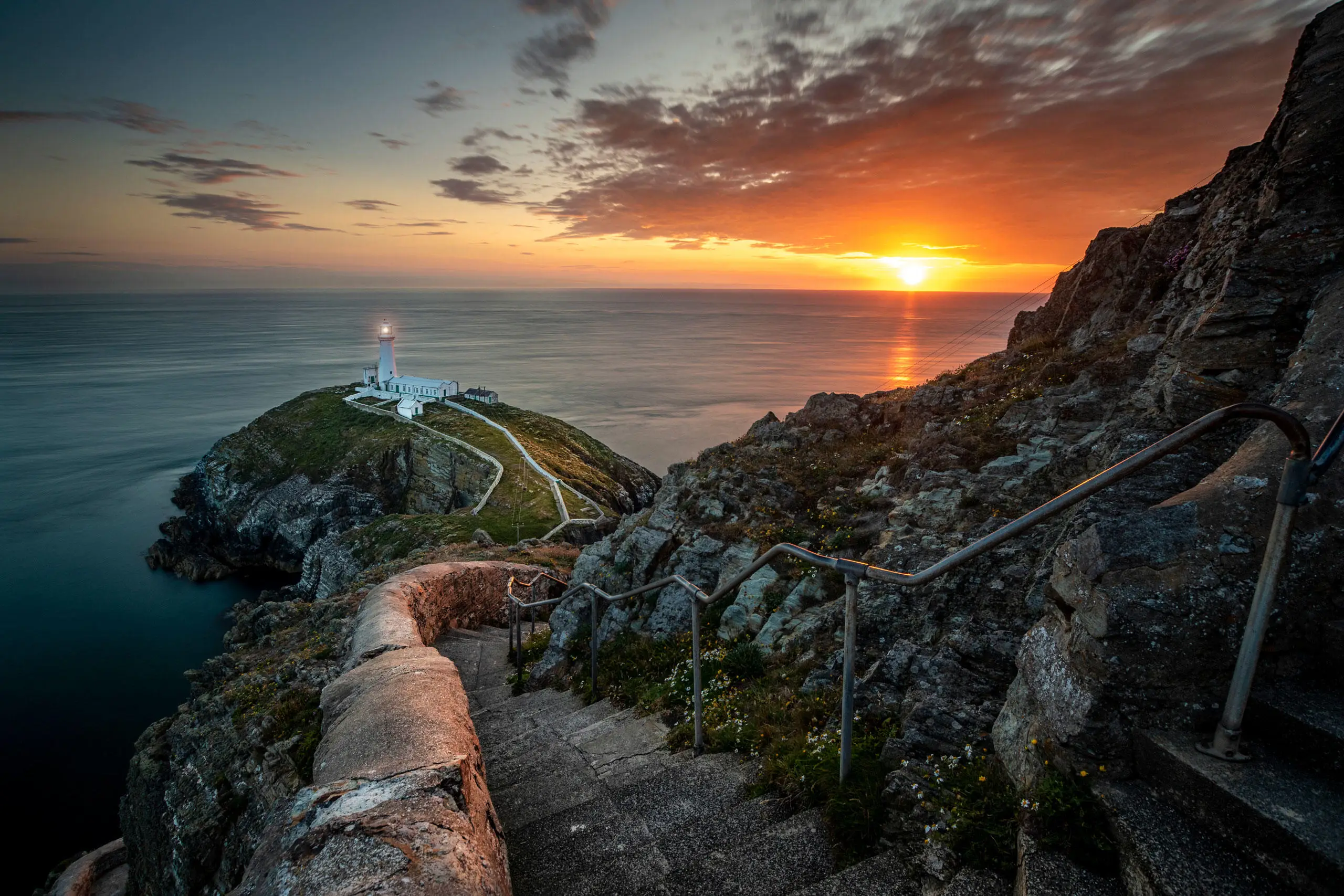Start at Holyhead Maritime Museum, overlooking Newry Beach. While the museum is largely focused on Anglesey’s seafaring history, one exhibit stands apart – the fossilised jawbone and tooth of an extinct woolly mammoth (nicknamed Myfanwy).
Belonging to the massive, elephant-like creatures that roamed the land more than 30,000 years ago, it was unearthed by workers in Holyhead Harbour in 1864. After spending some time at Wales’s National Museum in Cardiff, this prehistoric relic is now a permanent fixture in its place of discovery.
Head west out of Holyhead on the minor road to South Stack on the opposite side of Holyhead Mountain. These craggy cliffs, well-known for their abundant birdlife, also have other weighty claims to fame. South Stack’s stones and spectacular geology are part of the GeoMôn UNESCO Global Geopark, thanks to dramatic folds and faults that date back almost 600 million years.
In slightly more recent history, Roxy Music fans may recognise the jagged rock formations from the cover art to the 1975 album Siren, where they feature alongside model and actress Jerry Hall.
Head back into Holyhead and pick up the A55/A5025 north for Llanfachraeth.
Retrace your steps along the A5025 for a mile, turning left on the B5109 for Bodedern. About 0.5 mile/0.8m after the village, take a left onto a minor road and follow the brown signs for Presaddfed Burial Chamber (there’s a small parking place opposite).
Standing in a field, this pair of monuments are just a few metres apart, suggesting they were constructed at different times in the Neolithic period. The southern chamber has weathered the millennia the best, still supporting its large capstone on four sturdy uprights.
The burial chamber sits at the southern end of Llyn Llywenan, Anglesey’s largest natural lake. This Site of Special Scientific Interest is a habitat for a range of rare aquatic plants and a great place to spot wildfowl like wigeons, tufted ducks, shovelers and pochards.

